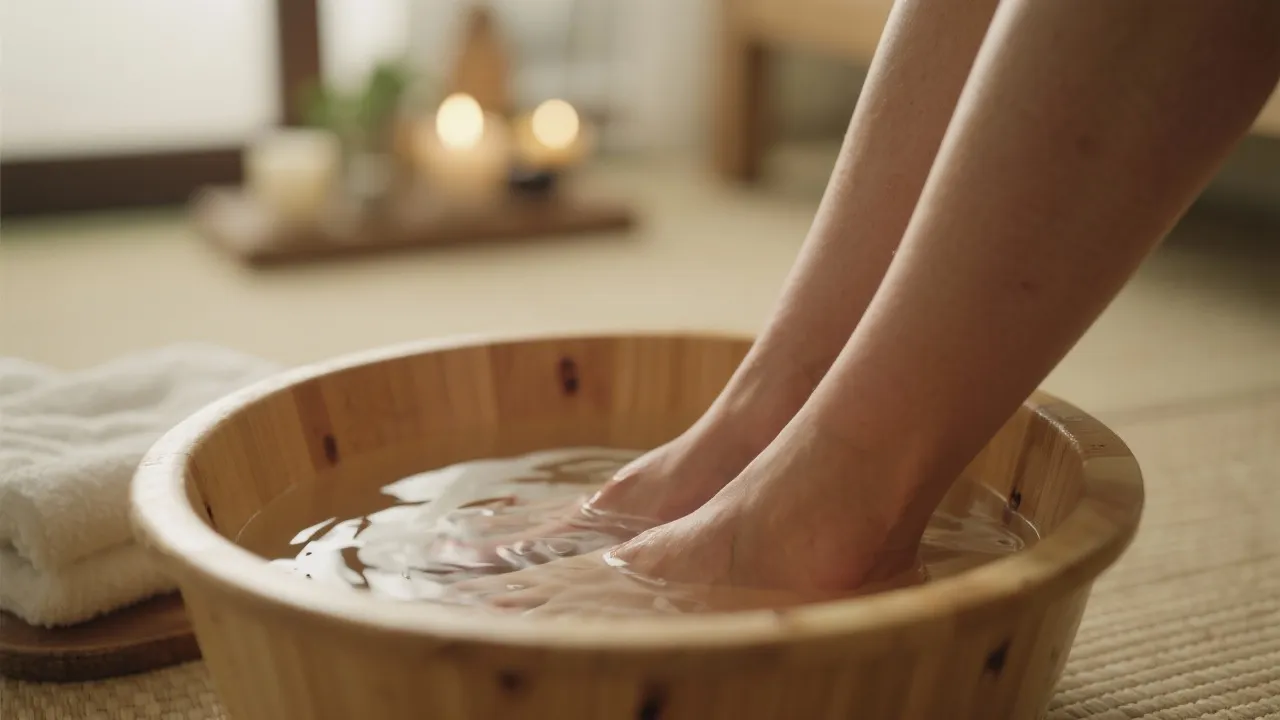Benefits of Neuropathy Foot Baths
This article delves into the soothing and therapeutic benefits of neuropathy foot baths. Neuropathy, a painful nerve condition, finds relief through these specialized foot baths designed to enhance circulation, ease discomfort, and promote overall foot health. With professional insights, explore the advantages, considerations, and FAQs surrounding this innovative treatment method.

Understanding Neuropathy and Its Impact
Neuropathy, commonly referred to as nerve damage, can affect various parts of the body but is very frequently felt in the feet. This condition often results in pain, tingling, numbness, and even muscle weakness, drastically impacting an individual's quality of life. In fact, estimates suggest that up to 50% of individuals with diabetes may experience some form of neuropathy, making it one of the most prevalent complications associated with the disease. While the condition can stem from diabetes, infections, physical trauma, or even systemic diseases, early diagnosis and management are critical to maintaining mobility, comfort, and overall health.
Neuropathy can manifest in various forms, including peripheral neuropathy (affecting the arms and legs), autonomic neuropathy (affecting involuntary bodily functions), and focal neuropathy (manifesting as sudden weakness or pain in specific areas). The symptoms can vary significantly from person to person, leading to challenges in diagnosis and treatment. For individuals with neuropathy, everyday activities such as walking or even standing may become painful experiences. Additionally, neuropathy can lead to complications such as foot ulcers or infections due to reduced sensation, making effective management even more essential.
The Role of Neuropathy Foot Baths
Neuropathy foot baths have emerged as a practical solution for alleviating discomfort associated with neuropathy. These baths utilize therapeutic techniques to enhance blood circulation, soothe irritated nerves, and reduce pain levels. By combining warmth with mineral-rich water, these baths provide a relaxing and healing environment for affected individuals. Furthermore, the sensory experience of a foot bath can serve as a powerful tool for distraction, helping to reduce the perception of pain and stress.
Foot baths may also promote a sense of routine and self-care, which can be psychologically beneficial. Engaging in regular foot baths allows individuals to take an active role in their health management, potentially leading to improved outcomes. The ritual of preparing and soaking in a foot bath can create opportunities for mindfulness and relaxation, which are crucial for overall well-being.
Scientific Basis of Foot Bath Efficacy
The effectiveness of neuropathy foot baths lies in their ability to harness hydrotherapy and thermotherapy principles. Warm water promotes vasodilation, which increases blood flow and aids in flushing out toxins from nerve tissues. The increase in temperature can create a soothing effect that reduces muscle tension and spasms, further compounding the therapeutic benefits of the foot bath.
Additionally, the inclusion of minerals such as magnesium or Epsom salts can enhance the effects of foot baths. Magnesium, in particular, is known for its ability to relieve muscle tension and cramping. Epsom salts can penetrate the skin, entering the bloodstream and addressing inflammation at a systemic level. This combination not only relaxes the body but also provides essential nutrients that may be lacking in individuals with neuropathy.
Research has explored the implications of hydrotherapy for various conditions and found significant benefits in terms of pain reduction and improved overall well-being. The warmth of a foot bath can stimulate the production of endorphins—natural painkillers in the body—further undermining the intensity of neuropatic pain.
Optimal Uses and Considerations
For individuals seeking relief from neuropathy symptoms, incorporating foot baths into their routine can be highly beneficial. These therapeutic sessions can be performed several times a week, with each lasting between 20 to 30 minutes. It's essential for patients to ensure the temperature is comfortable to avoid any potential burns due to reduced sensitivity from nerve damage. A good practice is to test the water with a thermometer before putting feet in and ensuring it remains within a comfortable range, typically between 90°F to 105°F (32°C to 40°C).
Another important consideration is the choice of bath additives. While some individuals may opt for plain warm water, others may find that adding herbal infusions, essential oils, or specific salts can enhance the experience. For example, adding peppermint or lavender essential oil can provide additional therapeutic benefits, including enhanced relaxation and reduction of neuropathy symptoms. However, it is crucial to consult with a healthcare professional before introducing any new substances to ensure there are no adverse effects, especially in individuals with underlying health conditions.
Additionally, practicing good foot hygiene before and after baths is essential, as individuals with neuropathy may have an increased risk of infection. It's also advisable to dry the feet thoroughly after a bath to prevent any fungal infections that may arise from moisture being trapped between toes.
Key Benefits Highlighted
- Pain Reduction: Regular baths can significantly alleviate the constant discomfort associated with nerve damage. Reports from individuals suggest that many experience notable reductions in their daily pain levels, allowing for significantly increased mobility and functionality.
- Improved Circulation: The relaxing effects of the warm water help enhance blood flow, which is vital for nerve repair and overall foot health. Enhanced circulation can reduce the risk of foot ulcers, a common complication associated with neuropathy.
- Enhanced Comfort: Aided by the calming nature of the bath, it helps in reducing stress, contributing to better sleep and overall well-being. Individuals often report improved relaxation and sleep quality following routine use of foot baths.
- Reduced Anxiety and Stress: The soothing experience of a foot bath can extend beyond physical pain relief; many users find that it promotes psychological well-being by providing a moment of tranquility in their daily lives, countering the anxiety often associated with chronic pain conditions.
Comparison of Foot Bath Types
| Type | Features | Benefits |
|---|---|---|
| Standard Warm Water Bath | Basic warm water immersion | Promotes relaxation and circulation, an excellent starting point for those new to foot baths. |
| Mineral-Infused Bath | Water enhanced with magnesium or Epsom salts | Reduces inflammation and nerve pain, taking advantage of the therapeutic properties of minerals. |
| Bubble Massage Bath | Includes gentle bubbles and vibrations | Provides a massage-like effect for additional relief, enhancing relaxation through gentle physical stimulation. |
| Herbal Bath | Infused with herbal extracts | Offers the therapeutic properties of various medicinal herbs, promoting balance and wellness. |
| Aromatherapy Bath | Includes essential oils | Enhances mood and relaxation through the olfactory experience, coupled with physical relief. |
FAQs
- Does the foot bath cure neuropathy? No, it doesn't cure neuropathy but helps in managing symptoms effectively. The focus should be on symptom management and overall foot care.
- How often should I use a neuropathy foot bath? It is recommended to use it 3-4 times a week, but always follow healthcare advice. Individual needs may vary, and some may find greater benefits with more frequent sessions.
- What should I do if I experience discomfort? Stop the session immediately and consult a medical professional to reassess the treatment regimen. Pain may indicate that water temperature is too high or that there may be underlying injury or condition requiring attention.
- Can anyone use foot baths for neuropathy? While foot baths can be beneficial for many individuals suffering from neuropathy, it’s essential that those with severe circulatory issues or skin conditions consult a healthcare professional before beginning treatment.
- What are the best additives for a neuropathy foot bath? Effective options include Epsom salts, magnesium flakes, and essential oils like lavender or chamomile. Each additive can offer unique benefits tailored to individual needs.
In conclusion, neuropathy foot baths serve as an excellent supplementary therapy for those battling the challenging symptoms of nerve damage. With careful attention to temperature, duration, and choice of additives, they offer a sanctuary of relief and relaxation, promoting better foot health and improved well-being. Users often report enhanced mobility, reduced pain levels, and an overall better quality of life when incorporating foot baths into their self-care routines. By aligning these practices with professional medical advice, individuals can enhance their quality of life and embrace a more comfortable future.
Looking ahead, further research into the effects of hydrotherapy and foot baths specifically for neuropathy may uncover more potential benefits and guiding practices. As awareness of neuropathy and its management grows, so does the chance for improved outcomes through holistic and integrative approaches. Ultimately, the journey through neuropathy may be a challenging one, but with supportive measures such as foot baths, individuals can find pathways to comfort and relief as they seek to reclaim aspects of their health and lifestyle.





